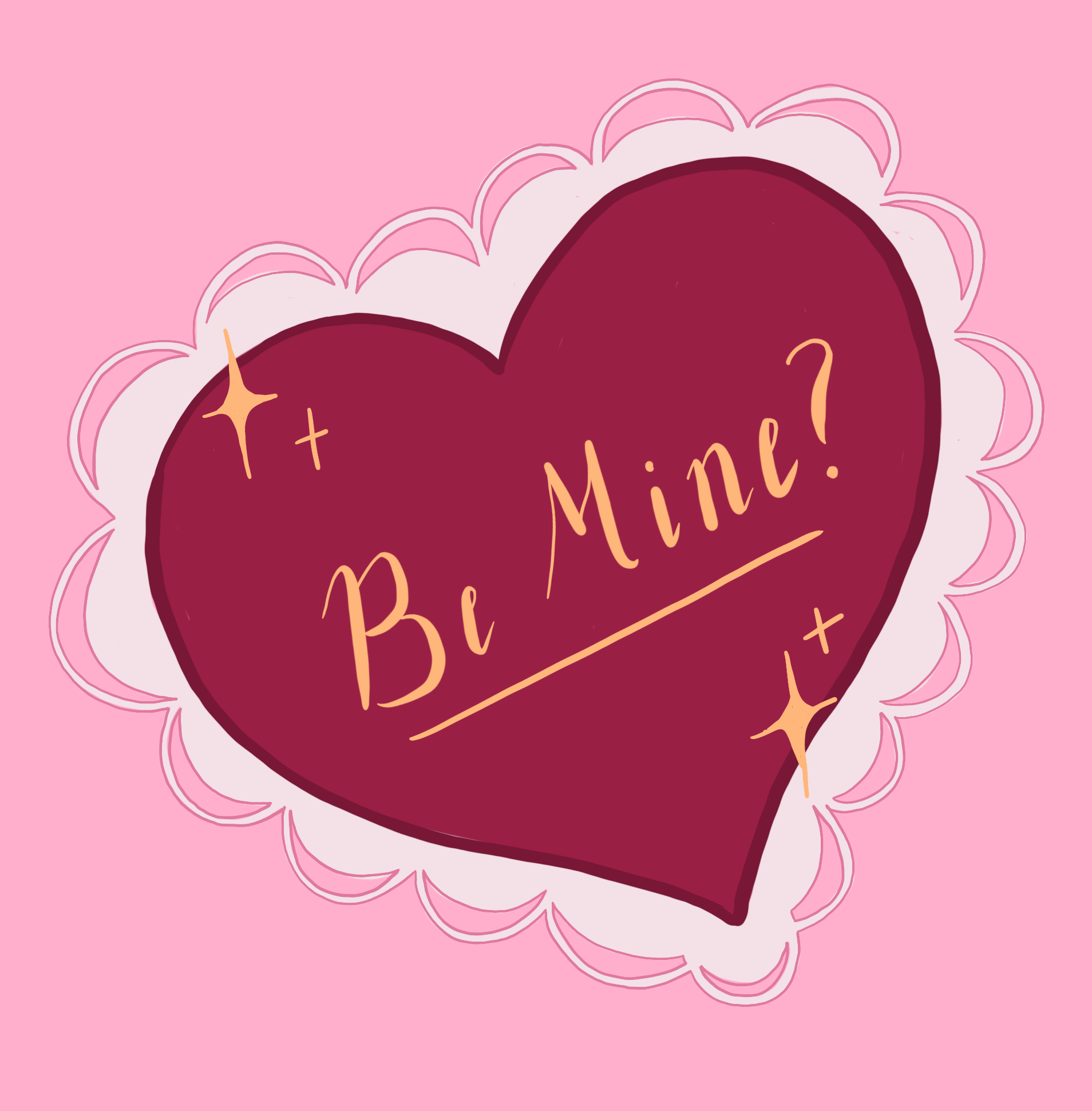
Jacinda Webber
During the years I spent trapped in my bedroom from COVID-19, I discovered a passion for vintage and pseudo-vintage stationery. I ordered a package of “Valentine’s Day ephemera” from a cute online shop and spent one of my many quiet, long afternoons making an elaborate card once the supplies arrived. I selected a little paper bouquet, placed it on top of a lace cutout and framed the whole design with a ribbon border. I slipped the card in my desk where it would wait for a recipient and a purpose. I considered the card a promise: someday I would find the right kind of love for cutout flowers and paper lace.
Of course, I had no idea what that meant. Even now I struggle to link the logical chains — what does my excitement about you have to do with the face of a baby angel? Why must we keep ritualizing our love in objects? I didn’t know. Nevertheless, something told me that a card this elaborate was not to be taken lightly.
By my senior year of high school, after a couple of pseudo-romantic experiences, I had more questions than answers about what romance was, how to know when I’d found it and whether I was capable of experiencing or engaging in it in the first place.
My friends and I agreed that romantic affection couldn’t be neatly differentiated from platonic love on the basis of activities or behaviors. With friends or significant others you can go to the movies, visit restaurants, drive in the mountains at sunset, hike for hours, hold hands or lean on each other’s shoulders while watching a movie. Though most of these things carry romantic connotations, they are perfectly normal to engage in with platonic friends. Then how to tell the difference between romantic and platonic love?
“You just know,” said one friend in a long-term relationship. Perhaps accurate, but unhelpful.
“When you’re friends with someone, things that they like or are interested in make you think of them. When you’re into someone, everything makes you think of them,” my best friend told me. Jackpot! Here was a definition I could use.
My best friend is someone I think about often, someone I miss when we’re apart. Despite allegations to the contrary from a myriad of friends and bad actors, though, I have never suspected that our relationship was creeping towards the romantic category. She is not someone I think of every time I see anything. Yet we have certainly had a special relationship which, at times, resembled a domestic partnership.
Our relationship sometimes looked like the two of us going grocery shopping together, or spending lots of time drinking tea, reading, or doing work in my house. In the more extreme examples of our matrimonial playacting, she lived in my house for days or weeks at a time during school breaks. (We went to a boarding school, I was a day student, her family lived far away.) Once I came home from work and she had cooked lunch for me, which made me feel like quite the 1950s breadwinning husband.
After all the adventures we had shared, I knew that a commitment to my best friend was one that I could stand by in the long run. And so I knew, as if it had been the case all along, that the card had to be for her. I had assumed initially that because I was saving the card for some special kind of love, I was waiting for some kind of romance to happen to me. I didn’t realize that the love between my best friend and I, which was so integral to our daily lives, was just as special and beautiful as any romantic attraction.
Perhaps romantic feelings find disproportionate expression in art and literature because romantic attraction can be more intense than platonic attraction (though not always! I love living on Earth). This intensity also makes romantic feelings more commercially exploitable than friendship, which is one of the reasons for the Valentine’s Day industrial complex. But while romance is (often) temporary, friendship is (ideally, and certainly not literally) forever. The love I have for my best friend, platonic though it is, merits the same kind of recognition that society gives romantic relationships.
Several strong counter-narratives to the primacy of romantic love are circulated around Valentine’s Day, especially by those celebrating Galentine’s Day and its little-known counterpart, “Palentine’s Day.” Yale’s “Let’s Grab a Meal” culture also encourages us to prioritize our friends on the order of up to three times per day. So maybe you don’t need my reminder to keep your friendships in mind this Friday. Yet it’s still worth taking the time to consider, seriously, how real the love you share with your friends is, and to let them know how much you care. A card goes a long way! If you need paper, I have enough to share.







